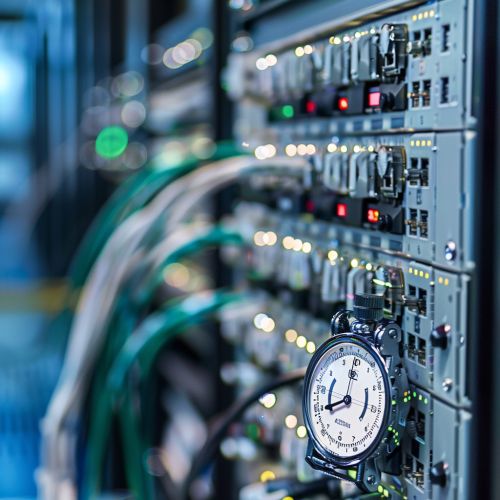Side-channel attacks: Difference between revisions
(Created page with "== Introduction == Side-channel attacks are a type of cybersecurity threat that exploit the information gained from the physical implementation of a computer system, rather than weaknesses in the implemented algorithm itself. These attacks are unique in that they do not directly attack the underlying cryptographic primitives or their mathematical foundations, but rather exploit unintentional information leakage from the physical system. == Types of Sid...") |
No edit summary |
||
| Line 8: | Line 8: | ||
[[Timing attack|Timing attacks]] are a type of side-channel attack where an attacker attempts to compromise a cryptosystem by analyzing the time taken to execute cryptographic algorithms. Every logical operation in a computer takes time to execute, and these times can vary based on the input and the operation. By measuring the time it takes for a system to perform certain operations, an attacker can gain information about the secrets within the system. | [[Timing attack|Timing attacks]] are a type of side-channel attack where an attacker attempts to compromise a cryptosystem by analyzing the time taken to execute cryptographic algorithms. Every logical operation in a computer takes time to execute, and these times can vary based on the input and the operation. By measuring the time it takes for a system to perform certain operations, an attacker can gain information about the secrets within the system. | ||
[[Image:Detail-79061.jpg|thumb|center|A computer system with a stopwatch, indicating the measurement of time taken for operations.]] | |||
=== Power Analysis Attacks === | === Power Analysis Attacks === | ||
Revision as of 20:54, 16 May 2024
Introduction
Side-channel attacks are a type of cybersecurity threat that exploit the information gained from the physical implementation of a computer system, rather than weaknesses in the implemented algorithm itself. These attacks are unique in that they do not directly attack the underlying cryptographic primitives or their mathematical foundations, but rather exploit unintentional information leakage from the physical system.
Types of Side-Channel Attacks
There are several types of side-channel attacks, each exploiting different types of information leakage. These include, but are not limited to, timing attacks, power analysis attacks, electromagnetic attacks, and acoustic cryptanalysis.
Timing Attacks
Timing attacks are a type of side-channel attack where an attacker attempts to compromise a cryptosystem by analyzing the time taken to execute cryptographic algorithms. Every logical operation in a computer takes time to execute, and these times can vary based on the input and the operation. By measuring the time it takes for a system to perform certain operations, an attacker can gain information about the secrets within the system.

Power Analysis Attacks
Power analysis attacks are another type of side-channel attack that involves monitoring the power consumption of a cryptographic hardware device. By analyzing power consumption patterns during the encryption or decryption process, an attacker can infer the secret key used in the process.
Electromagnetic Attacks
In electromagnetic attacks, the attacker measures the electromagnetic radiation emitted by a device during the execution of cryptographic operations. Similar to power analysis attacks, these measurements can then be analyzed to extract the secret key.
Acoustic Cryptanalysis
Acoustic cryptanalysis is a type of side-channel attack that involves analyzing the sounds emitted by computers or other devices. These sounds can come from various components such as the CPU, power supply, and even the keyboard. By analyzing these sounds, an attacker can gain information about the data being processed.
Countermeasures
There are several countermeasures that can be implemented to protect against side-channel attacks. These include algorithmic countermeasures, physical shielding, power and electromagnetic analysis countermeasures, and timing attack countermeasures.
Algorithmic Countermeasures
Algorithmic countermeasures involve modifying the cryptographic algorithm to reduce the amount of information leaked during its execution. This can include techniques such as blinding, where random data is added to the input of the algorithm to change the observable characteristics of its execution.
Physical Shielding
Physical shielding involves adding physical barriers or noise sources around the cryptographic device to prevent the leakage of information. This can include things like metal shielding to block electromagnetic radiation, or acoustic dampening materials to reduce the sounds emitted by the device.
Power and Electromagnetic Analysis Countermeasures
Power and electromagnetic analysis countermeasures involve modifying the device to reduce the correlation between the power consumption or electromagnetic radiation and the operations being performed. This can include techniques such as balanced logic, where the device is designed to consume the same amount of power regardless of the operation being performed.
Timing Attack Countermeasures
Timing attack countermeasures involve modifying the system to reduce the correlation between the execution time of operations and the data being processed. This can include techniques such as constant time programming, where the execution time of operations is made independent of the input data.
Conclusion
Side-channel attacks represent a significant threat to the security of cryptographic systems. By exploiting information leakage from the physical implementation of a system, rather than the mathematical foundations of the cryptographic algorithms, these attacks can bypass traditional cryptographic defenses. However, with careful design and the use of appropriate countermeasures, it is possible to significantly reduce the risk of these attacks.
